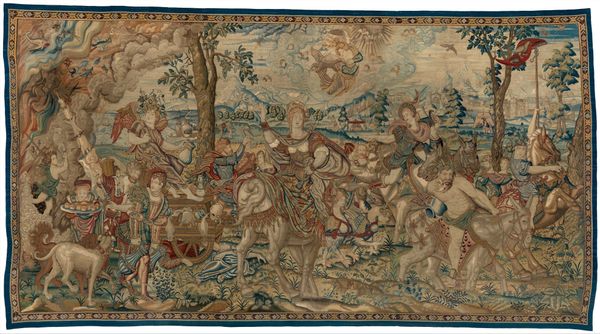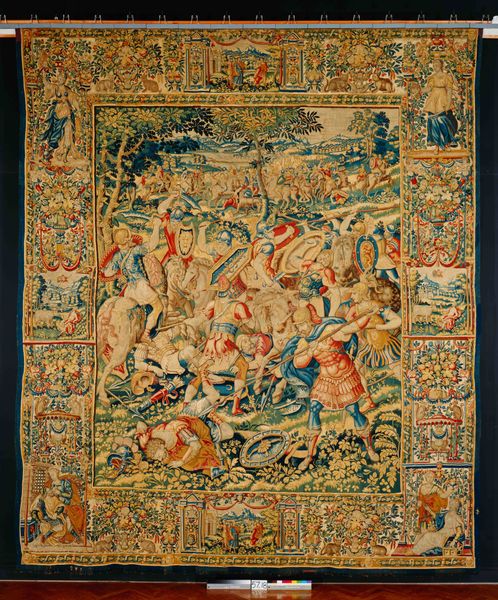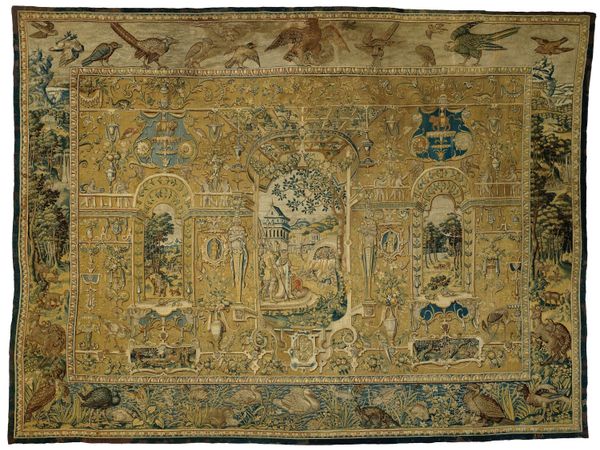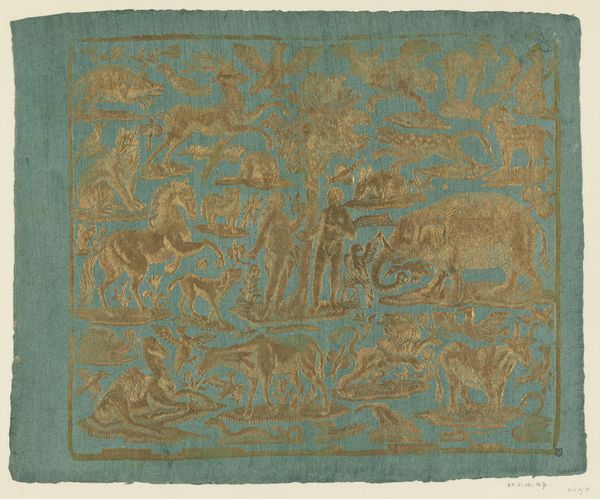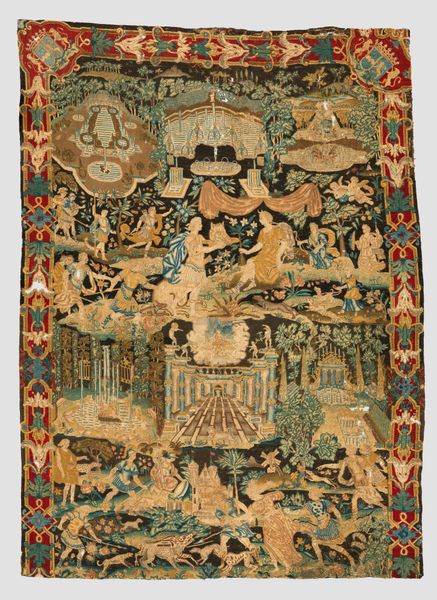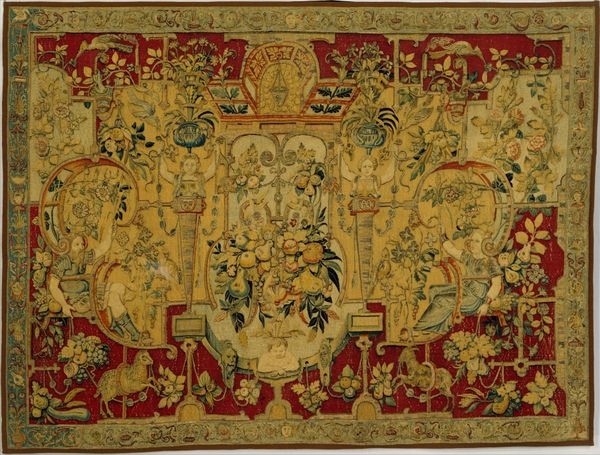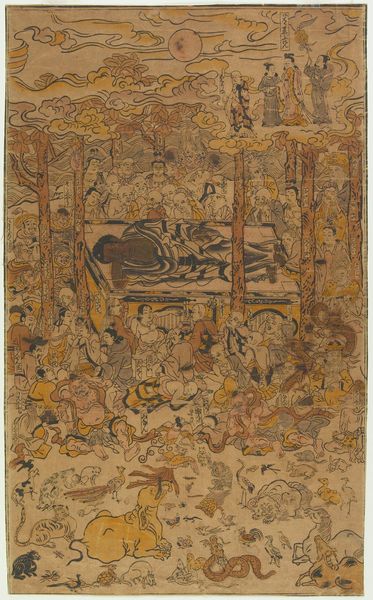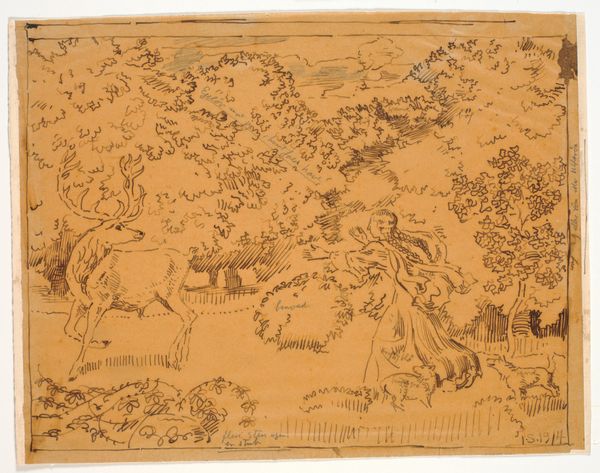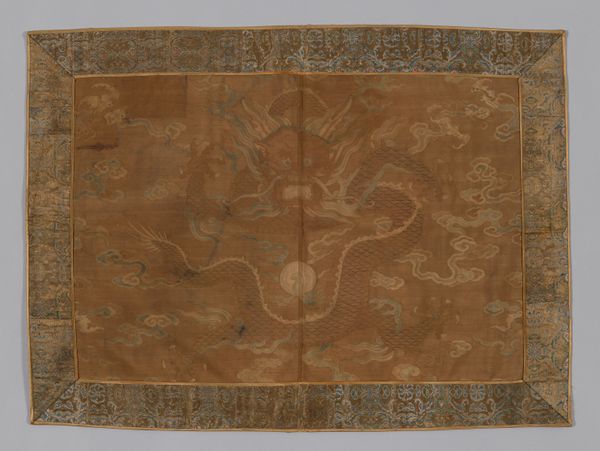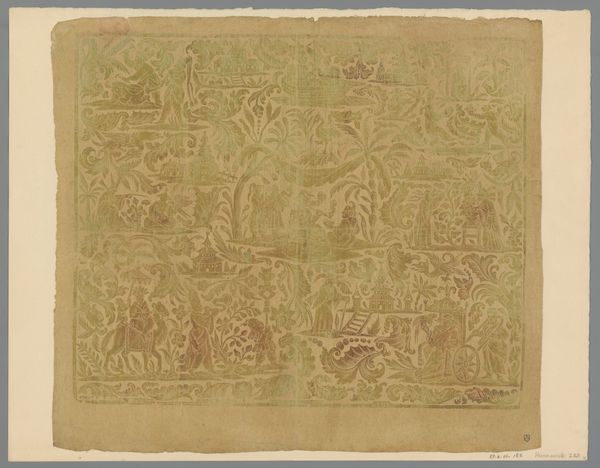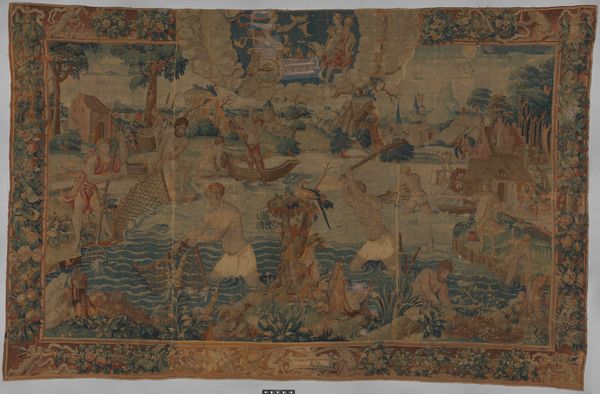
Deer Hunt with the Story of Diana and Actaeon c. 1580 - 1620
0:00
0:00
silk, textile
#
silk
#
landscape
#
textile
#
mannerism
#
figuration
#
11_renaissance
#
history-painting
Dimensions: 136 1/4 x 205 1/4 in. (346.08 x 521.34 cm)
Copyright: Public Domain
Curator: Here we have "Deer Hunt with the Story of Diana and Actaeon," a Mannerist textile from circa 1580 to 1620, its authorship currently unknown. Editor: The density of figures in the tapestry makes it almost vibrate with a restless energy. The close value and hues further accentuate that restlessness! Curator: Exactly! Note how this tapestry uses the hunt as a metaphor for societal hierarchies and power dynamics. The hunters, presumably nobles, are actively shaping and controlling their environment, echoing the dynamics of gender, race, and class during that era. Diana and Actaeon speak directly to transgression and consequence in that context, specifically patriarchal. Editor: The composition is intricate. It guides the eye through a maze of intertwining forms, but this intricacy also brings tension. The density creates visual tension, almost like a game of figure and ground, of push and pull with all that heavy line work creating strong verticals in contrast with horizontality of the field! Curator: Indeed, this isn't just a scene of leisure. Hunting was an exclusive aristocratic activity, reinforced by controlling narratives like Diana's, demonstrating the ruling class's dominance in early modern Europe and often justified and sustained by force or mythology. The tapestry serves as a testament to their social status and divinely-ordained right to rule. Editor: I also observe a flattening of space, a technique typical of tapestries of the time, but this compression seems to heighten the action—giving this chase all of its vibrancy and speed! It keeps your eyes engaged while the landscape serves only to support the visual architecture, nothing more. Curator: The depiction of Actaeon, transformed into a stag and torn apart by his own hounds after witnessing Diana bathing, offers a potent commentary on transgression and divine retribution, reminding the tapestry’s original viewers about power, sexuality, and perhaps morality. The whole narrative suggests the limitations and dangers of overstepping societal bounds for marginalized bodies during the early modern era. Editor: The anonymous maker has composed an exceedingly captivating composition by taking full advantage of texture, color, and arrangement. By using strong diagonals, curves and horizontals as guides we find the key events. The tapestry functions quite successfully, not as simple textile but as complex architecture that breathes. Curator: So, as we reflect on this fascinating artifact, it urges us to consider how visual narratives reinforce power structures and influence collective identities. Editor: Yes, and beyond all social considerations, it's hard to ignore the rich optical experience, making one consider the relationship of tapestry, form, and meaning—all made richer because we've also taken the time to understand it better together.
Comments
No comments
Be the first to comment and join the conversation on the ultimate creative platform.
